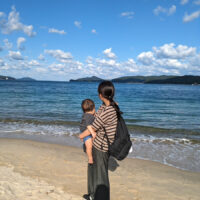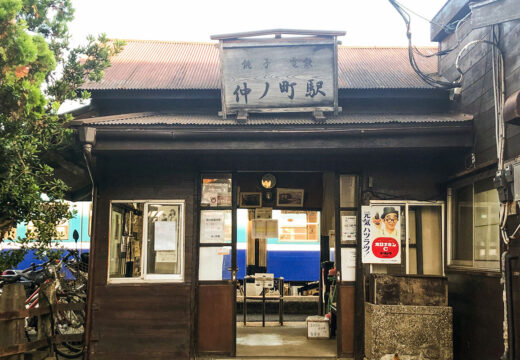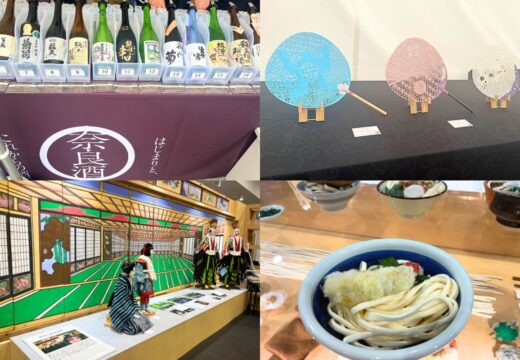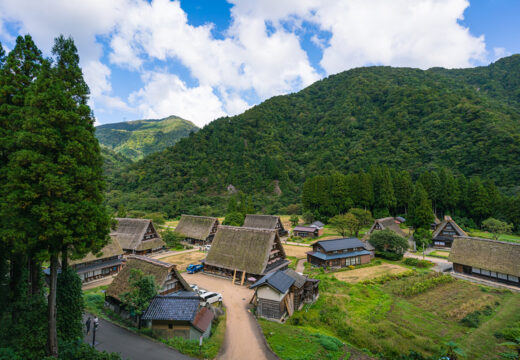Beppu City, Oita Prefecture: Japan’s Premier Onsen Resort. A Journey to Heal Body and Soul
Category: Sightseeing
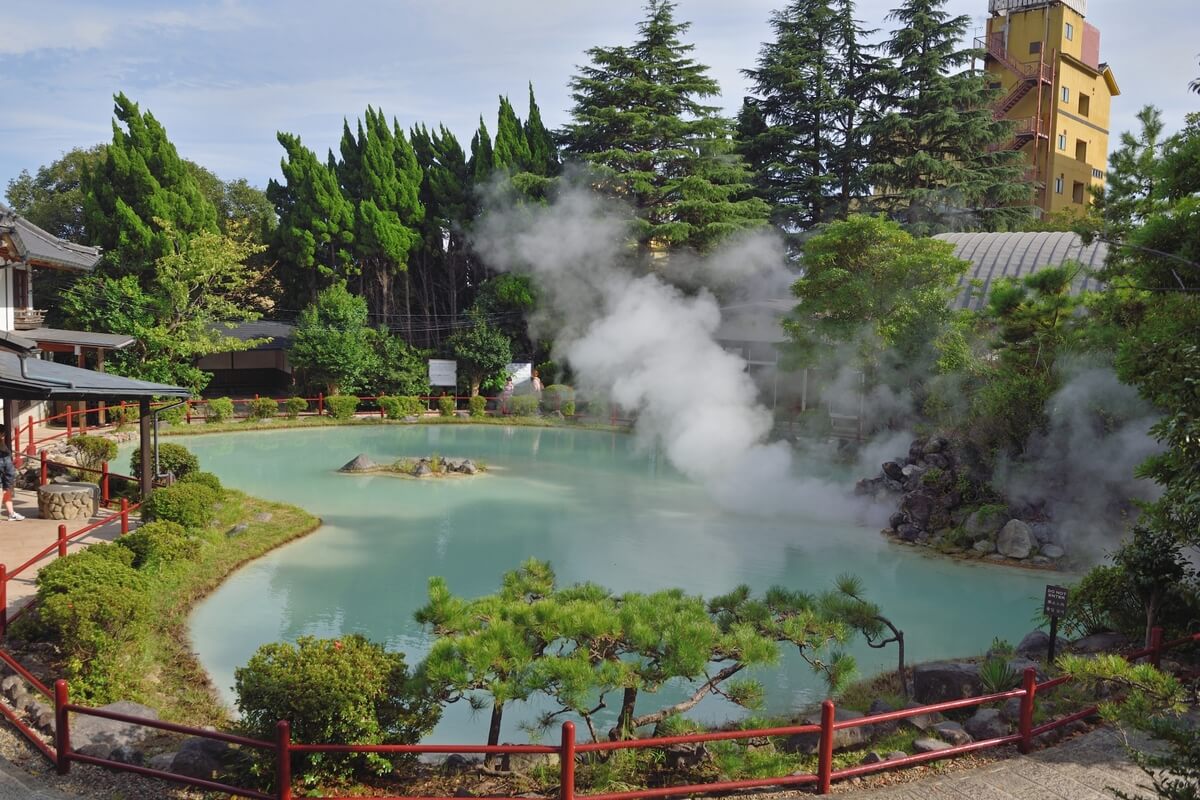
Japan, the land of Onsen(Hot Springs). While Onsen can be found throughout the country, Oita Prefecture is Japan’s most famous Onsen destination. Within Oita, Beppu City boasts the largest number of Onsen in Japan. This time, we introduce the history of Beppu Onsen, popular Onsen spots, souvenirs, and gourmet cuisine.
What is Beppu City, Oita Prefecture?
Oita Prefecture is renowned as Japan’s premier Onsen destination. Located in the central part of the east coast, Beppu City boasts over 2,800 Onsen sources, ranking first in Japan for both the number of sources and total output. The “Beppu Hatto” (Eight Onsen of Beppu), featuring Beppu Onsen and seven other scattered Onsen within the city, and the “Jigoku Meguri” (Hell Steam Tour) visiting seven unique Onsen sources, are classic tourist attractions.

The steam rising from hot springs visible throughout the city offers a spectacular view unique to Japan’s premier onsen destination.
This area is recommended not only for those seeking to heal mind and body in the onsen but also for anyone wishing to enjoy the beautiful scenery of the onsen town.
The History of Beppu City and Onsen
The history of Beppu City’s Onsen is ancient, appearing in Japan’s oldest geographical records, the “Iyo no Kuni Fudoki” and “Bungo Fudoki,” dating back over 1,000 years.
For example, the “Iyo no Kuni Fudoki” records that when Sukunabikona no Mikoto visited Iyo Province. (present-day Ehime Prefecture) fell ill, Ōkuninushi no Mikoto laid a long pipe along the seabed of the Bungo Channel (the strait between Ōita Prefecture in Kyushu and Ehime Prefecture in Shikoku) to bring water from Beppu Onsen. He bathed Sukunabikona no Mikoto in this water, saving his life.
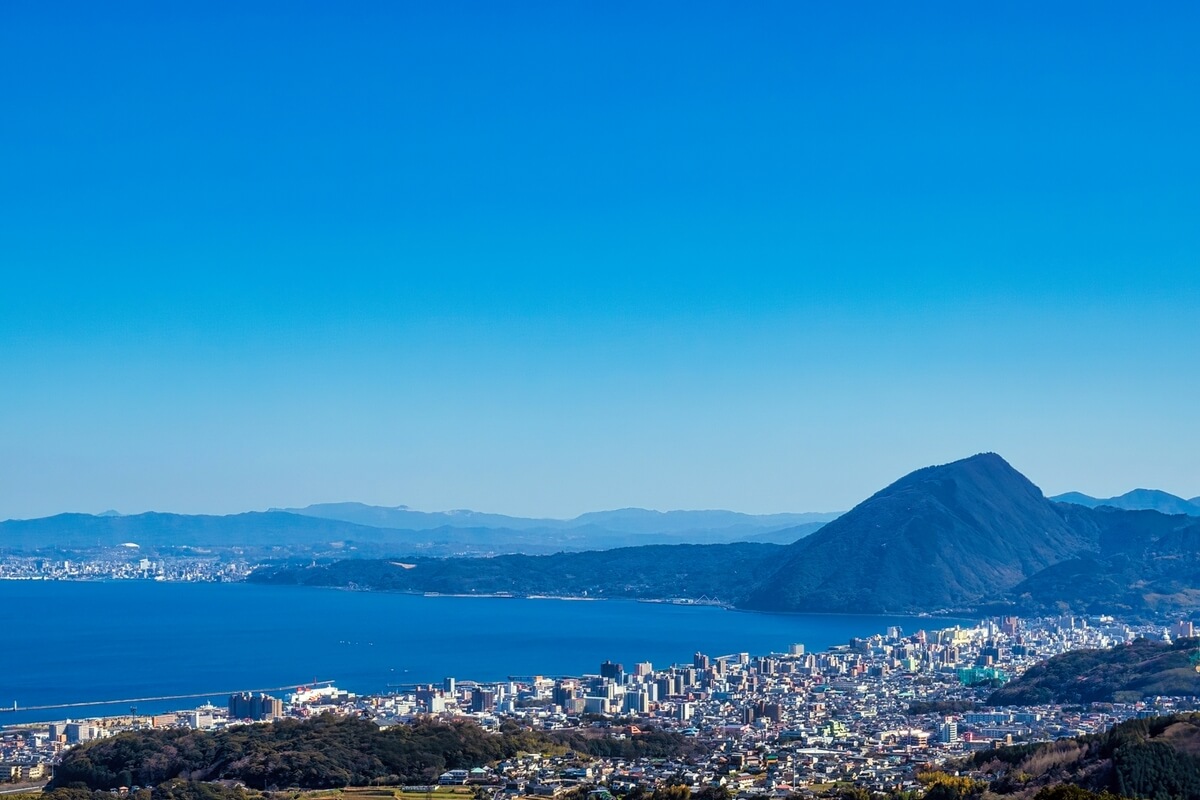
Beppu’s onsen, famed in Japanese mythology as the waters that saved a god’s life. In truth, its rise as a tourist destination began around 1870, entering the Meiji era.
Before that, it thrived as a Toji-ba—a Onsen (hot spring) resort where people stayed long-term to recuperate from illness or injury.
The reason? Beppu Onsen boasts seven of the ten types of spring water, offering a wide variety of therapeutic benefits ideal for Toji.
Beppu’s Onsen have healed people for centuries, since mythical times. Why not explore and find your favorite Onsen?
Recommended Onsen and Nearby Attractions
Takegawara Onsen

This iconic public bathhouse in Beppu Onsen is located about a 10-minute walk from JR Beppu Station.
Founded in 1879, it originally featured a bamboo-roofed bathhouse, later renovated with tile roofing, hence the name Takegawara Onsen.
Its signature feature is the Sunaba (sand bath), where visitors can cover themselves in sand warmed by the Onsen water, enjoyed alongside bathing. The building itself retains a retro charm, and its nighttime illumination creates a fantastical atmosphere.
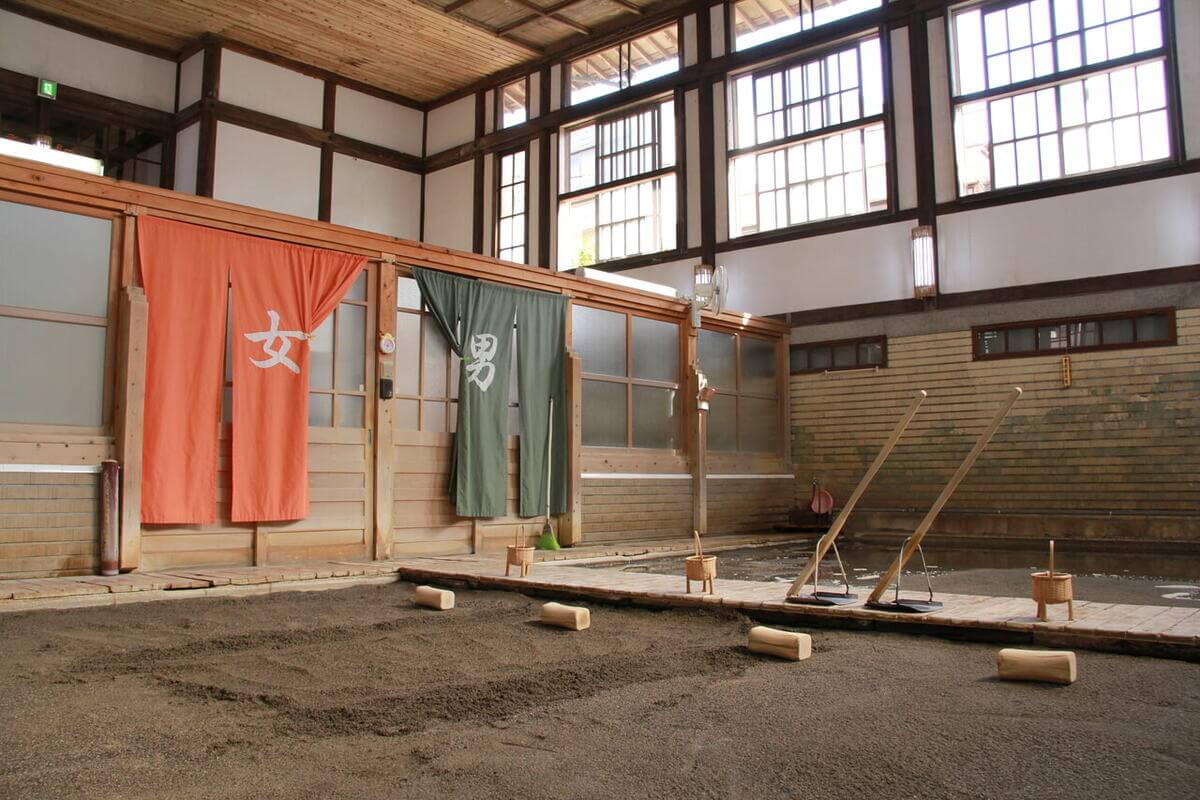
▼Official website here (Japanese only)
https://www.takegawara-onsen.com/
Kannawa Steam Bath
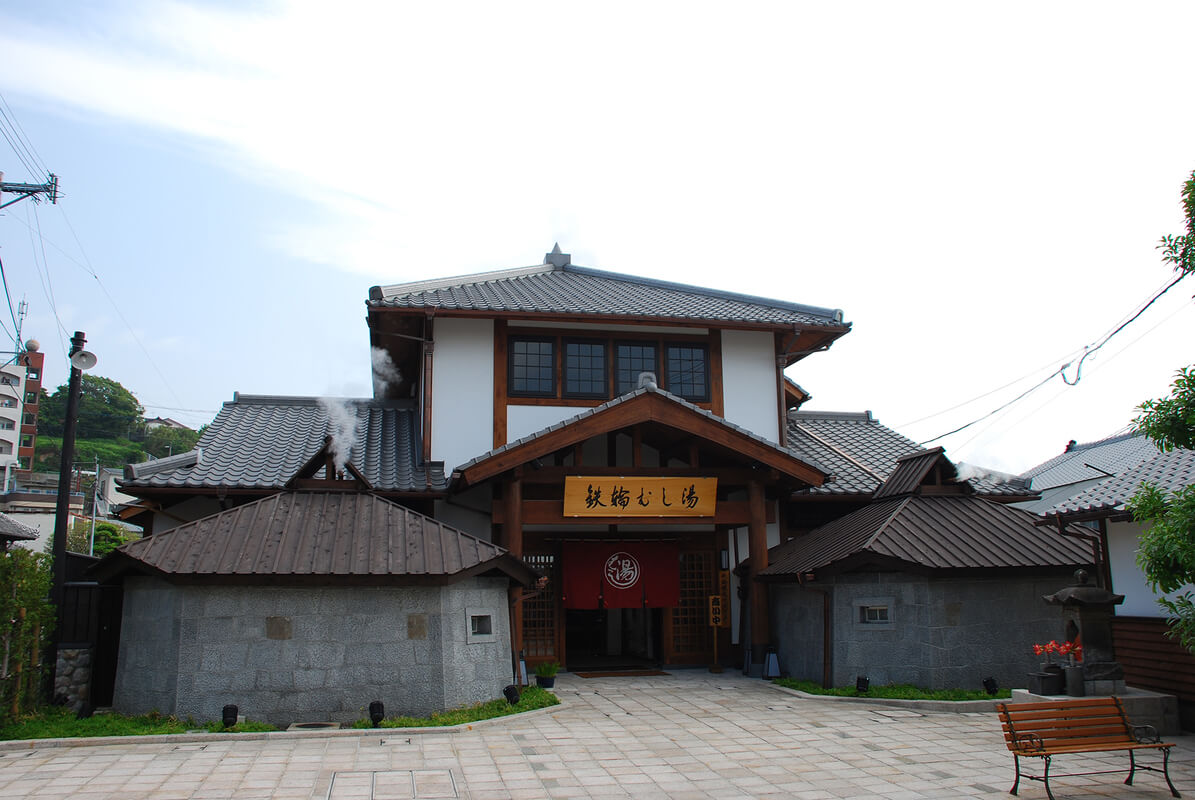
This historic Onsen was founded in 1276 during the Kamakura period by the monk Ippen Shonin.
Mushi-yu is a bathing method where you lie on medicinal herbs spread across an approximately 8-tatami-mat (about 142 square feet) stone chamber heated by the onsen’s steam. It gently warms you from the inside out, causing sweat to bead up.
After the mushi-yu, you can also enter a regular onsen bath to wash off the sweat. It’s recommended not only for its relaxing effects but also for improving poor circulation and promoting beautiful skin.
▼Click here for Beppu City’s information page
https://www-city-beppu-oita-jp.translate.goog/sisetu/shieionsen/detail11.html?_x_tr_sl=ja&_x_tr_tl=en&_x_tr_hl=ja
Steam Observation Deck

A viewpoint offering panoramic views of the steam rising from the Kannawa Onsen area, the townscape, and the surrounding mountains.
Beppu’s steam was selected as Japan’s second most beautiful landscape after Mount Fuji in NHK’s (Japan’s public broadcaster) “Landscapes of Japan We Want to Preserve for the 21st Century” in March 2001.
The daytime scenery is stunning, and the nighttime view of the illuminated steam is romantic and beautiful. Why not experience this unique Beppu scenery, along with the Kannawa Onsen?
▼Click here for Beppu City’s information page
https://www-city-beppu-oita-jp.translate.goog/sisetu/sangyou_kankou/yukemuri.html?_x_tr_sl=ja&_x_tr_tl=en&_x_tr_hl=ja
Must-see spots, Jigoku Meguri (Hell Steam Tour)
Enjoying onsen in Beppu isn’t just about bathing. We also recommend the Jigoku Meguri tour, where you can see onsen vents spewing steam, hot mud, and boiling water at temperatures around 100°C.
Origin of the Hell of Beppu
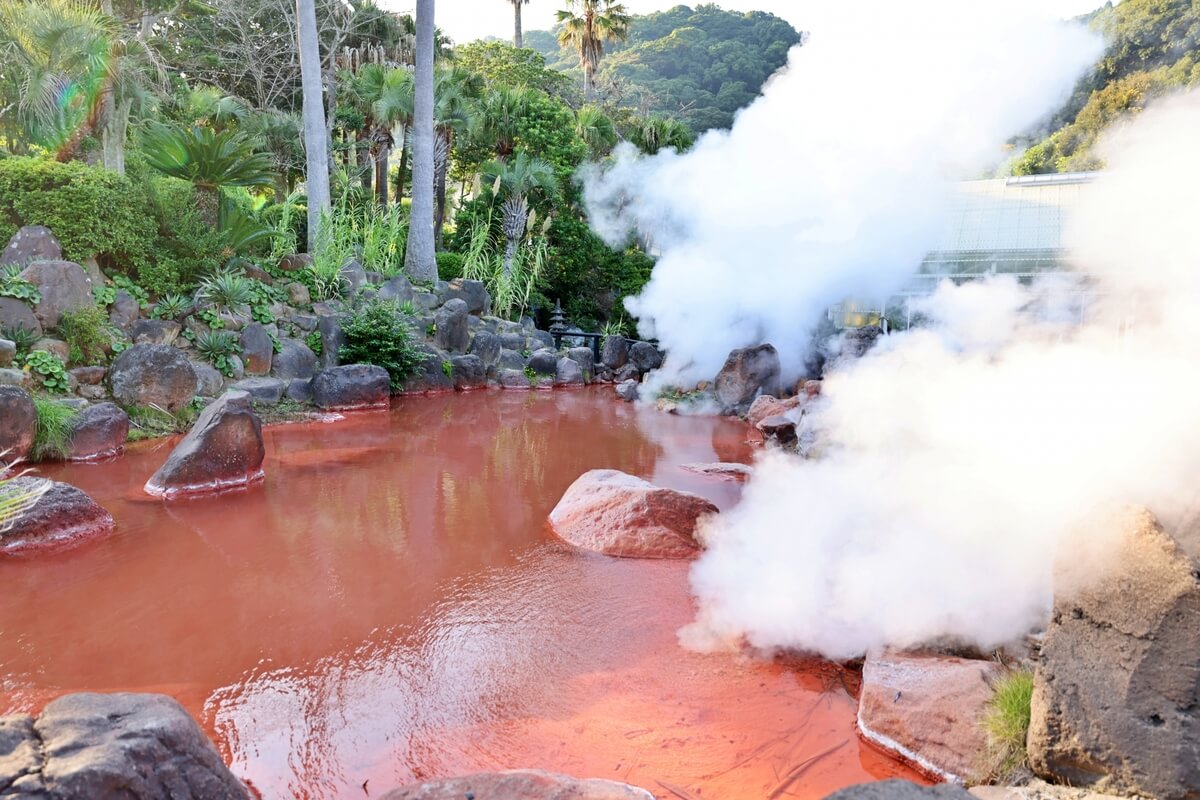
Over 1,000 years ago, the Beppu Kannawa area was a land shunned and avoided due to the eruptions of fumaroles, hot mud, and boiling water, according to the Bungo Fudoki, one of Japan’s oldest geographical records. It is said that the bubbling Onsen resembling the hells depicted in Buddhist art led to the area being called “Hell (Jigoku in Japanese).”
Seven Hells

The Beppu Jigoku Tour features seven uniquely distinct hells. These include the cobalt blue “Umi-Jigoku (Sea Hell),” designated a National Scenic Beauty Spot; the crimson “Chi-no-ike Jigoku (Blood Pond Hell)”; the pale blue “Shira-ike Jigoku (White Pond Hell)”; and the spectacularly erupting “Tatsumaki Jigoku (Tornado Hell).”
Additionally, there’s the “Oni-ishi-bozu Jigoku (Demon Stone Monk Hell)” with its boiling gray hot mud, the “Oni-yama Jigoku (Demon Mountain Hell)” inhabited by crocodiles, and the “Kamado Jigoku (Stove Hell)” featuring drinkable hot springs. Beyond simply viewing these hellish landscapes, visitors can also enjoy local cuisine and purchase souvenirs.
▼For a detailed report on the Jigoku Meguri, please check here.
▼The official Jigoku Meguri website is here
https://www.beppu-jigoku.com/
Recommended Souvenirs
Beppu Bamboo Crafts
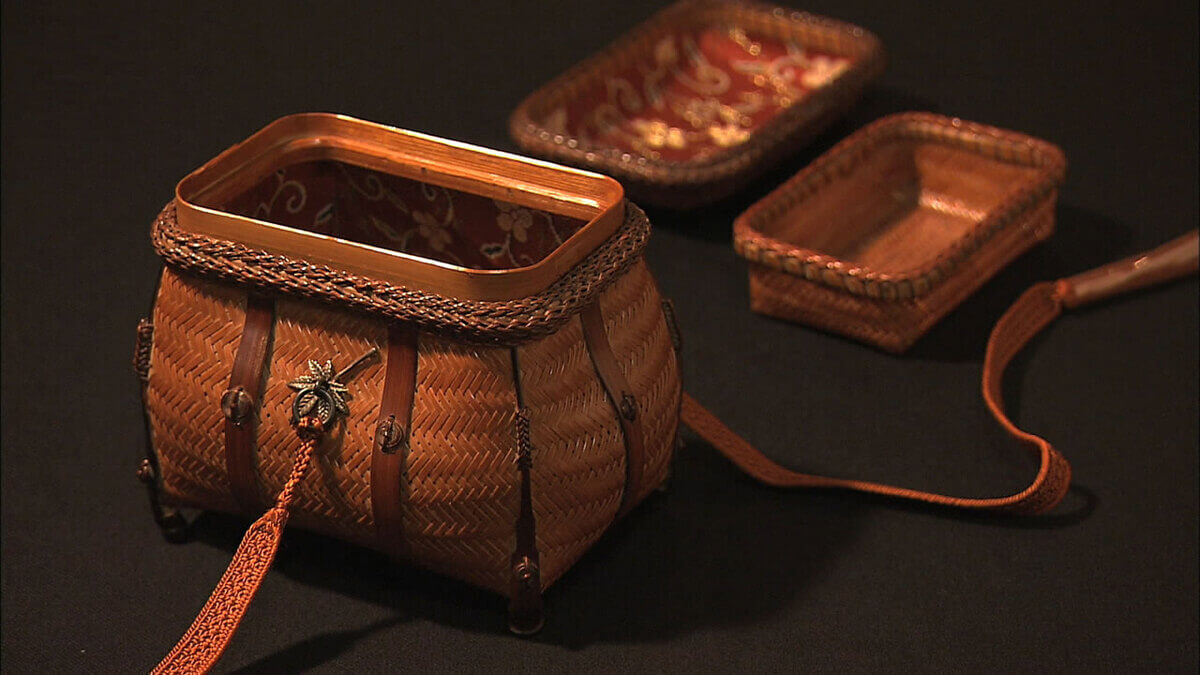
Oita Prefecture is Japan’s top producer of madake bamboo. Traditional crafts made from madake are produced mainly in Beppu City.
Its history is ancient, said to have begun around the 1st century when Emperor Keikō stopped in Beppu and his kitchen staff found high-quality bamboo, using it to make rice bowl baskets.
With over 200 distinct weaving techniques, the craft produces a wide range of items from everyday goods to fine art pieces. You can take home your favorite souvenirs, including baskets, strainers, small storage containers, and woven bags.
▼Click here for the Beppu Bamboo Crafts Information Site
https://bamboo.beppu-tourism.com/
Yunohana (hot-springs mineral deposits)
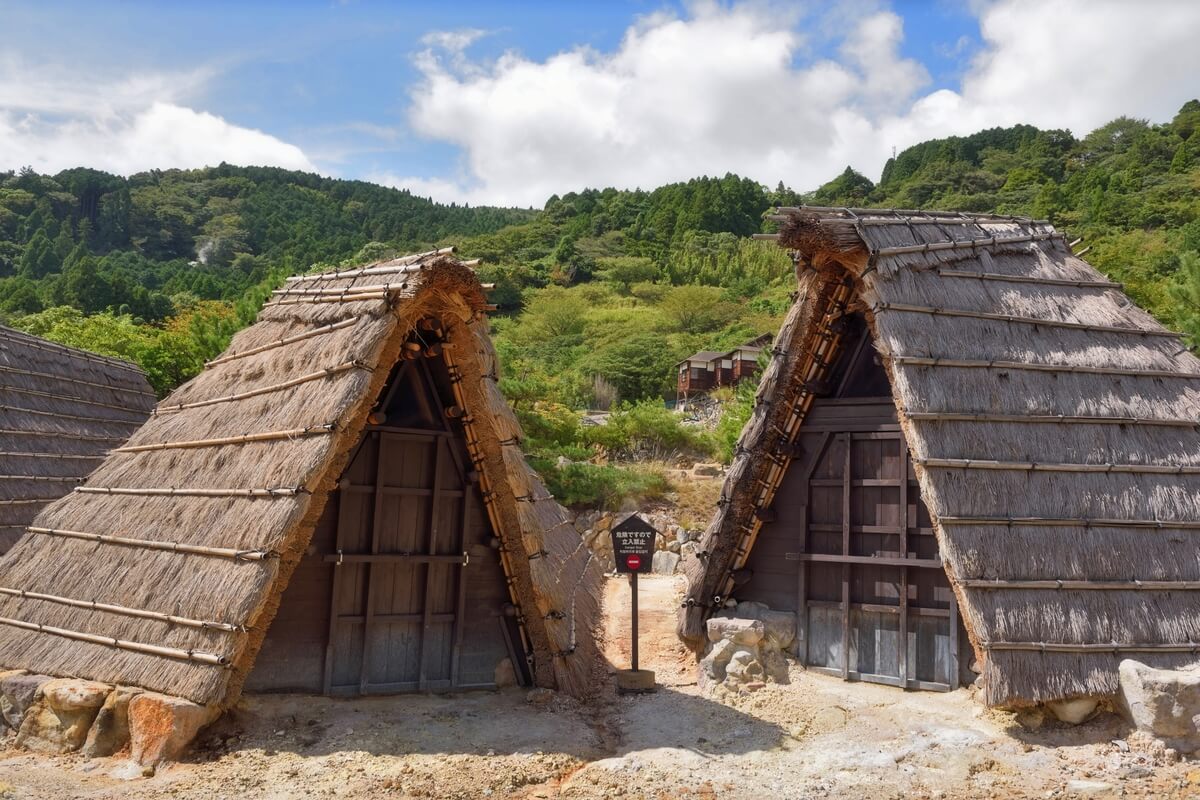
▲The hut where Yunohana (hot-springs mineral deposits) are made
At Myoban Onsen, one of Beppu’s Eight Onsen, the facility called Yunohana Hut uses onsen fumaroles and blue clay to crystallize the onsen components, creating Yunohana (hot-springs mineral deposits).
While yunohana can be seen throughout Japan, Beppu’s yunohana production, continuing since the Edo period, is a rare technique found only here in the world.
You can take Yunohana home as a bath additive. It is said to be effective for neuralgia, arthritis, stiff shoulders, prickly heat, and poor circulation. Simply adding it to your home bath lets you enjoy the benefits of Beppu’s onsen minerals.
Kabosu

Kabosu, a fragrant citrus fruit native to Oita Prefecture. Slightly larger than Tokushima Prefecture’s sudachi, about the size of a tennis ball, it features a refreshing aroma and a mellow tartness. Enjoy its juice squeezed over grilled fish or fried chicken, or pair it perfectly with shochu or highballs.
Within Beppu City, you can purchase various souvenirs featuring kabosu juice, such as dressings, juices, and snacks.
Recommended Gourmet
Toriten (Chicken Tempura)

Oita Prefecture boasts the highest chicken consumption in Japan. While it features various dishes like Torimeshi (chicken rice) and Karaage (Fried chicken), “Toriten” (chicken tempura coated in a batter made from flour, egg, and water) stands out as a popular local specialty representing the prefecture.
ts crispy coating and juicy, tender chicken create an addictive texture. Each restaurant has its own unique batter and seasoning, so be sure to try different places and compare.
Jigoku-mushi (Hell Steam)
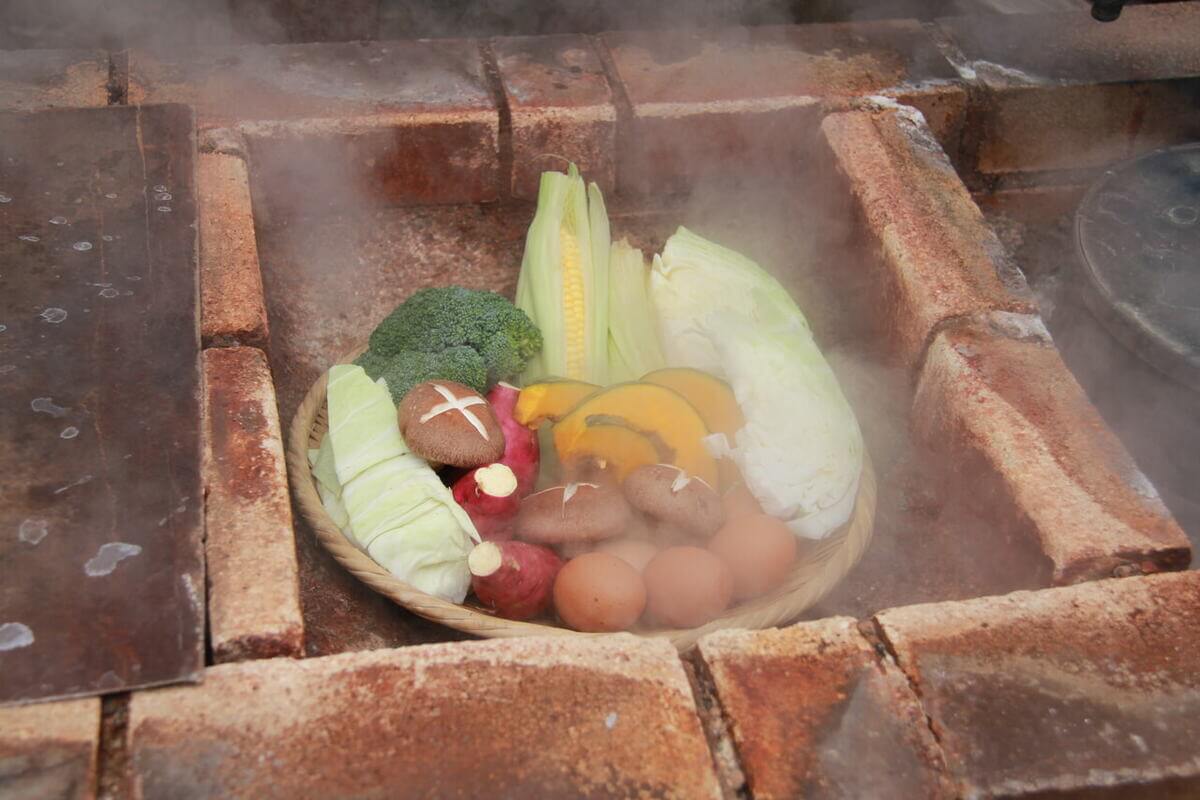
Jigoku-mushi, a cooking method passed down in Beppu’s Kannawa Onsen. True to its name, it uses the intense steam heat—around 100 degrees Celsius—blowing up from the hellish springs to steam and cook various ingredients like vegetables, eggs, fish, and meat. Since no oil is used, it’s healthy, and steaming concentrates the pure, natural flavor of the ingredients.
You can enjoy it plain or add seasonings like salt, soy sauce, or ponzu—the freedom to customize it to your taste is part of its appeal.
Beppu Reimen Noodles

Beppu City’s signature B-grade gourmet dish (fast, cheap, and delicious food): Beppu Reimen Noodles. Said to have originated in the city’s yakiniku restaurants, you can find Reimen everywhere in Beppu—yakiniku joints, ramen shops, and diners.
While there’s no set standard for the noodles, toppings, or soup, the classic version features a seafood-based broth, buckwheat noodles, and toppings of beef chashu and cabbage kimchi.
The refreshingly cold noodles taste even better after an Onsen!
Let’s go to Beppu City, Oita Prefecture—the holy land of Onsen!
Boasting Japan’s largest number of onsen and highest output volume, Beppu Onsen is a historic onsen destination featured in Japanese mythology. It’s a must-visit onsen mecca for anyone seeking to enjoy onsen during their trip to Japan. Beyond the onsen, it offers abundant attractions like traditional crafts such as Beppu bamboo crafts and delicious local gourmet cuisine. Why not refresh both mind and body in the onsen, then enjoy souvenirs and gourmet food unique to Beppu?
